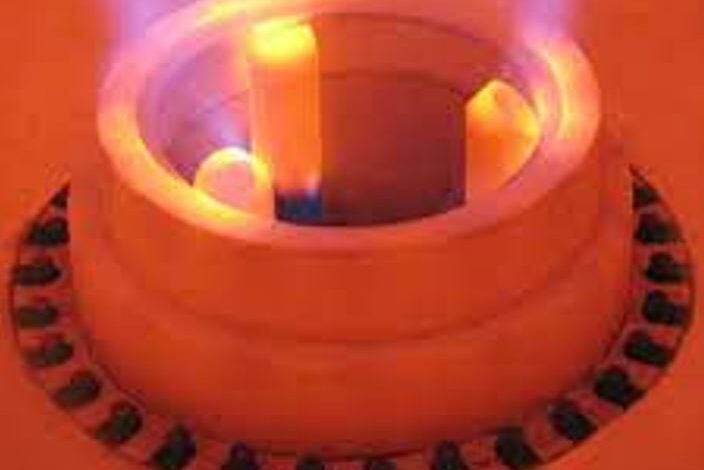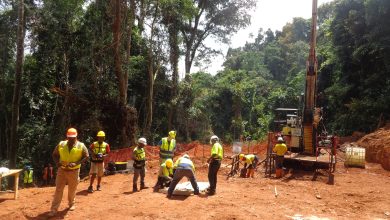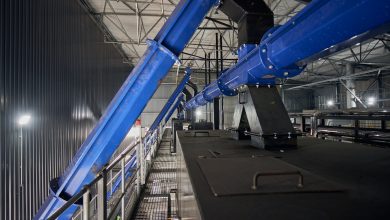
By implementing the low NOx burner technology, industrial equipment supplier, Heaton Valves Africa ensures that furnaces in mines emit less Nitrogen oxide in line with current and future emissions stipulations. Recently, the company introduced Zeeco Combustion’s GB single-jet burner to the Southern African market.
Industries, mining companies specifically, should view investment in emissions reduction technologies as a necessity and not a grudge purchase. Recently, the World Health Organisation’s (WHO) new air quality guidelines (AQG) substantiate this notion. The AQG includes nitrogen oxide as one of the six classical pollutants, after evidence establishing health hazards arising from its exposure. The other pollutants are: particulate matter (PM), ground-level ozone (O₃), lead, sulfur oxide (SO) and carbon monoxide (CO).
Demand for Cost effective emission reduction technologies
Several countries have passed various pieces of legislation in line with the AQG. On its part, South Africa passed Air Quality Act, which is aimed at obligating industry to reduce Nitrogen dioxide emissions. Thus, in order to comply, mining companies should be investing in cost effective technologies which can enable them to reduce Nitrogen oxide emissions produced from their plants and equipment.
GB single-jet burner minimises NOx emissions
After noticing that complying with the Act Quality Act would be a challenge without the necessary technologies, recently, Industrial Equipment supplier, Heaton Valves Africa introduced Zeeco Combustion’s GB single-jet burner to the Southern African market.
Heaton Valves Africa’s Product Manager (Combustion Division), Grant Douglas, sees the effectiveness of GB the single-jet burner in minimising oxides of nitrogen (NOx) emissions enabling mines to achieve compliance. This is especially when the new combustion installations that the Act necessitates are to be made.
The Air Quality Act sets new combustion installations to be met, Douglas explains. “Furnaces with a design capacity equal to or greater than 50 MW heat input for new plants must amount to 400 mg/Nm3 under normal conditions of 10% O2 and 1 700 mg/Nm3 under normal conditions of 10% O2 for existing plants.” This implies that existing furnaces have to be replaced with conventional ultra-low NOx burners. However, the sheer cost and cumbersome process involved would render that to be impractical.
A convenient alternative
Douglas says the GB-single jet low NOx gas-fired burner is a convenient alternative. Instead of replacing entire furnace floors with conventional ultra-low NOX burners, the furnaces can be retrofitted with the GB-single jet low NOx gas-fired burner.
With only one fuel gas tip and/or one fuel gas riser, the GB-single jet low NOx gas-fired burner meets contemporary industry requirements. By retrofitting their furnaces with the GB-single jet low NOx gas-fired burner, mining companies are assured of the following benefits: Reduction of NOx production; High equipment uptime; and Low maintenance requirements.
-
Reducing NOx production
Mainly, GB-single jet low NOx gas-fired burner reduces NOx production in two ways: Through flue gas recirculation and the staged combustion process.
The burner unit reduces NOx emissions through its internal flue gas recirculation. The flue gas recirculation mixes gas-fired from the gas port with products of combustion, which lowers thermal NOx production. Through the combustion process, using stage air and staged fuel, Zeeco’s low NOX burner units reduce NOx emissions. Emissions can be reduced by up to75%.
-
High equipment uptime and Low maintenance Requirements
The simple, non-symmetrical design is handy as far as the process of installation is concerned. Thanks to the design, the installation process can be concluded within a short time, which ensures high equipment availability in mines and other sectors, whereas much less time as possible has to be spent on retrofitting. With slotted holes used for adjustments, the burner retrofit can be made with the existing burner file and wind box in place. Also, the design necessitates low maintenance requirements and a simple design.
Helping ‘future proofing’ furnances
Douglas tells clientele in Southern Africa Heaton that Valves Africa is well-equipped to help them retrofit their combustion units with its low NOx burner technology, GB single fuel jet burner. “By implementing the low NOx burner technology, we are ‘futureproofing’ the furnaces by ensuring that less NOx is emitted, in line with current and future emissions stipulations,” Douglas says, highlighting Heaton’s capability to offer a turnkey NOx burner technology to clients.
Thanks in great part to global pressure for industry to implement climate change policies and air quality standards, low NOx burner technology and staged fuelling have become a popular option in emission reduction. Heaton Valves believes this trend will continue as companies adopt technologies to ensure that their emissions do not breach the limit.
Side bar
Effects of NOx Real, not exaggerated
The health hazards of pollutants are real, not exaggerated. In children, air pollutants cause reduced lung growth and function, respiratory infections and aggravated asthma. In adults, aischaemic heart disease and stroke are the most common causes of premature death attributable to outdoor air pollution. Disturbingly, there is mounting evidence of diabetes and neurodegenerative conditions. Hence, the WHO hopes that, through implementing new AQG guideline levels, countries will be both protecting health as well as mitigating global climate change. Pollutant-related conditions claim an estimated 7 million annually.






